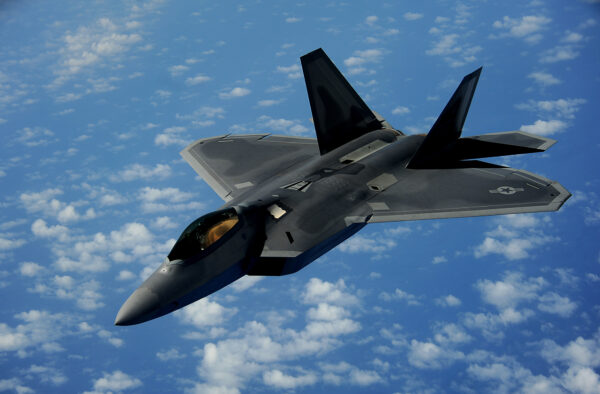
F-22 Raptor from the 1st Fighter Wing at Joint Base Langley-Eustis, Virginia refueling off the east coast, July 10, 2012 (Photo: Master Sgt. Jeremy Lock, Andrews AFB, MD)
September 18, 1947 marks the day the United States Air Force was officially established. However, its roots trace back to the early 20th century, when military aviation first took flight.
Pioneering the Skies: The 20th Century
In 1907, the U.S. Army Signal Corps took a significant step by forming the Aeronautical Division. This division laid the foundation for the future of what would eventually become the Air Force and led to the historic acquisition of the Wright Brothers’ aircraft in 1909.
Aviation’s Central Role in World War I
World War I brought aviation to the forefront of military strategy. Recognizing its pivotal importance, the Army Air Service was established in 1918. However, it remained a part of the U.S. Army until 1941 when the Army Air Forces were born, signifying a shift in the trajectory of airpower.
The Air Armada Emerges in World War II
World War II marked a period of rapid growth and development for the Army Air Forces, transforming it into a formidable air armada that played a decisive role in an Allied victory. This era witnessed monumental advancements in aviation technology and a significant expansion of airpower capabilities.
1947: The Birth of an Independent Force
With the end of World War II and the emergence of the Cold War, the Air Force was formally established as a separate service in 1947. This historic moment marked the inception of the now-second youngest branch of the U.S. Military, tasked with safeguarding American interests in a world grappling with escalating global tensions.
1947-1991: The Cold War
The Cold War era saw the Air Force shift its focus toward long-range bombers and nuclear weapons while actively participating in conflicts like the Korean War and the Vietnam War. This period emphasized the Air Force’s pivotal role in maintaining global security.
Late-20th and 21st Century Technological Advancements
Throughout the 20th century, the U.S. Air Force underwent significant modernization efforts in the development of advanced aircraft and space capabilities. These technological strides solidified the Air Force’s status as a cutting-edge force on the forefront of military innovation.
1991-2001: Post-Cold War
The post-Cold War era brought about changes, including reorganization and personnel reductions. Despite these challenges, the Air Force continued to play a vital role in various conflicts and peacekeeping missions worldwide, reaffirming its commitment to global security.
2001-Present: War on Terror
Following the tragic events of September 11, 2001, the Air Force became deeply involved in the War on Terror, providing crucial support for operations in Afghanistan and Iraq. This period demanded adaptability in the face of new challenges posed by non-uniform enemies and asymmetric warfare.
A Modern Force in a Changing World
Today, the Air Force stands as a highly capable and adaptable force, with a primary focus on air and space operations in an ever-evolving global security landscape. Its rich history, marked by technological innovation, strategic evolution, and unwavering commitment to national defense, continues to shape its mission and role in the modern world.












